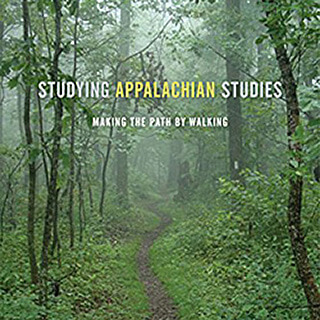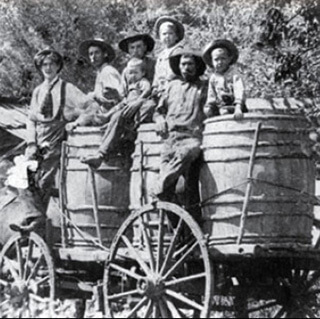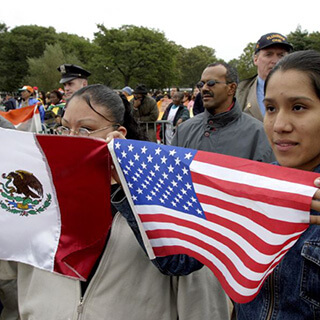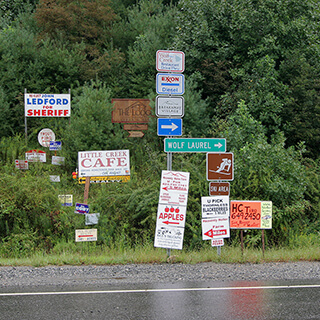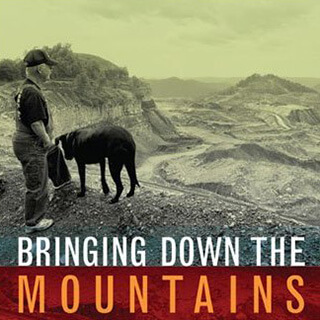Overview
In this essay, excerpted from Transforming Places: Lessons from Appalachia (University of Illinois Press, 2012), Barbara Ellen Smith and Stephen L. Fisher make a case for how spatial theories of power, capital, and inequality can inform our understanding of Appalachia and offer avenues for progressive change.
Essay
 |
How might spatial theory help us understand the political significance and potential of the diverse, place-based struggles documented in Transforming Places? First, place matters in the pursuit of social justice because inequality and the power relations that produce it are spatial. Some of the earliest and most influential efforts to theorize Appalachia as a region through a critical lens recognized this reality. Rick Simon, for example, employing a Marxist framework, asserted that Appalachia represented a spatialized manifestation of class exploitation.1Richard M. Simon, "Regions and Social Relations: A Research Note," Appalachian Journal 11 (Autumn–Winter 1983–1984): 23–31. In an era of protracted labor uprisings, particularly in the central Appalachian coalfields, and increased recognition of the relationship between regional poverty and a monoeconomy that produced occupational disability and death as routinely as commodities, this was a compelling formulation. More popular and lasting in influence was an internal colony approach, that is, the assertion that
Neither theory applied the implicit premise, that inequality is spatial, to social relations within
Second, place matters because Goliaths like capitalism, neoliberalism, and globalization are produced in specific places, where the locally-specific but globally-interconnected matrix of social relations conditions the prospects and strategies for effective resistance to these otherwise giant abstractions. Globalization, for example, as it is generated in Appalachia, less frequently involves the frenetic space-time compression epitomized in financial trading, multinational jumble of languages and cultural symbols, or cosmopolitan placelessness described and theorized by observers of global cities.4Saskia Sassen, The Global City: New York, London, Tokyo (Princeton, NJ: Princeton University Press, 2001); see the discussion in Doreen Massey, Space, Place, and Gender (Minneapolis: University of Minnesota Press, 1994), 162–172; Mary K. Anglin, "Moving Forward: Gender and Globalization in/of Appalachian Studies," Appalachian Journal 37 (Spring
 |
| County Economic Status in Appalachia, Fiscal Year 2013, Appalachian Regional Commission. |
 |
| Population Change in Appalachia, 2000–2010, Appalachian Regional Commission. |
 |
| Unemployment Rates in Appalachia, 2010 (County Rates), Appalachian Regional Commission. |
These contrasting examples point more to class distinctions than to any absolute difference between Appalachia and large urban centers, for globalization and neoliberalism generate similarities and linkages between these two spaces. Many of these commonalities, however, tend to be obscured by racial and spatial difference. Abandonment of specific racialized zones of central cities by capital and the state (except in its coercive apparatus of law enforcement) finds parallels across vast portions of rural Appalachia, where deindustrialization and disinvestment are no less severe.5Ronald D. Eller, Uneven Ground: Appalachia Since 1945 (Lexington: University Press of Kentucky, 2008). The human consequences of social and economic marginalization can also coincide, as revealed in one chapter’s discussion of similarities between the scourge of OxyContin abuse in rural southwest Virginia and the drug traffic of Harlem. There are related, even more direct, linkages: "development" in rural Appalachian areas has at times taken form as prison complexes, which provide jobs to rural whites who facilitate the containment of incarcerated, disproportionately poor, disproportionately black and Latino men and women from distant urban areas.6Appalshop, located in Whitesburg, Kentucky, has creatively used its community radio station, film-making, and theater troupe to explore how poor, rural Appalachians and poor, inner-city African Americans have been pitted against each other. See Rend Smith, "Survival and Resistance: Appalshop's First 40 Years," National Alliance for Media Arts and Culture, December 19, 2008, http://namac.org/node/6630.
Such linkages—and there are far more—caution those who would find meaning in the presumed uniqueness of Appalachia and its many places or, for that matter, who would elevate the achievements and desirability of the urban over all other spaces across the globe.7Much of the theoretical work on place and space arises from urban geography, which tends to follow Marx in condemning the "idiocy" of rural life. As Don Mitchell explains in The Right to the City: Social Justice and the Fight for Public Space (New York: Guilford Press, 2003), 18: "Idiocy in this sense does not refer to the intelligence of the inhabitants, or even the nature of their customs, but to the essential privacy—and therefore isolation and homogeneity—of rural life." We believe that the chapters in this book indicate otherwise. Interdependent and mutually defining economic, social, cultural, and political bonds between the urban and the rural become in many instances thicker and more complex with the accelerated global expansion of capitalism; they illustrate a relational understanding of place, wherein a specific "place" does not acquire meaning through some bounded, internal history, but through the specificity of its relationships with social processes and histories that stretch far beyond a particular locale.8Doreen Massey repeatedly and powerfully makes this point. See Space, Place, and Gender.
Third, place matters because the earth and its ensemble of places, including those uninhabited by humans, are in peril. Urban sprawl, "grow or die" philosophies of economic development, consumerist excess, and the disappearance of small farms—these and other expansionary and destructive elements of global capitalism are at stake in the environmental crisis. Within Appalachia, mountaintop removal coal mining (MTR) is the most egregious, visible, and heartbreaking example. The controversy over MTR is in one sense a classic instance of "jobs versus environment." But it also illuminates additional elements of place-based struggles: the "place" that people seek to defend, restore, revitalize, or transform is rarely self-evident in its boundaries or meanings in that the visions of its past and desires for its future are not identical among those who would claim it as home.
In the case of MTR, Appalachian residents are deeply divided over whether the mountains where they live represent beloved homeplaces, ancient ecosystems, God’s creation, or coalfields through which they and their ancestors have proudly made a living. These varied perspectives and the different knowledge that each entails drive the vision of a "knowledge commons," elaborated in one of three chapters on MTR, wherein those with experiential knowledge might encounter, challenge, and/or confirm the credentialed knowledge of "experts."
 |
| Satellite imagery depicting the effects of mountaintop removal in Boone County, West Virginia, 2009. From NASA Earth Observatory. |
The struggle over MTR is intensely emotional not only because the stakes are so high but also because these competing claims to place collide within the same social groups. For those who view place as the material and metaphorical homeplace of mountains, practices that systematically level mountain peaks are destroying not only the physical environment but the very soul of the place itself. They call on a past of intergenerational continuity on the land to condemn the destruction of MTR and, at times in collaboration with youthful activists in the anarcho-environmental network, Mountain Justice, envision a future of "green jobs" and clean energy production through, for example, wind farms. But for those who view place through a different past, the intergenerational legacies of coal mining, a "green" future beyond coal is both unimaginable and undesirable and entails destruction of the very place they claim as home. The result is a battle over place that resembles civil war.9Rebecca C. Scott, Removing Mountains: Extracting Nature and Identity in the Appalachian Coalfields (Minneapolis: University of Minnesota Press, 2010); Shannon Elizabeth Bell and Richard York, "Community Economic Identity: The Coal Industry and Ideology Construction in West Virginia," Rural Sociology 75, no. 1 (2010): 111–143.
 |
| Kathy Shearer, RAIL Solution rally along the I-81 Corridor, Abingdon, Virginia, 2005. Used with permission. RAIL Solution fought I-81 privatization and advocates a "steel interstate system" alongside the road. |
These bitter struggles illustrate that the meaning of place, while contested, is subject to diverse forms of political intervention. For example, one chapter documents successful efforts to combat privatization of I-81 in Virginia by inventing a common sense of place—and collective claim to the interstate as a public asset—among residents of small towns scattered along the interstate corridor. Two additional chapters explore the role of cultural organizing in fostering new forms of solidarity and visions of place among Appalachians in eastern Kentucky.
The propositions discussed above underscore that place is fundamental to the operation of power, the production of inequality, and the mobilization of resistance. In so doing, they also reveal that there is nothing fixed or inevitable about the current production of Appalachia as a place of intensive human and environmental exploitation. Another place is possible if we have the imagination to envision it and the collective political will to create it. 
Adapted from Transforming Places: Lessons in Appalachia. Copyright 2012 by the Board of Trustees of the University of Illinois. Used with permission of the University of Illinois Press. This material may not be reproduced, photocopied, reposted online or distributed in any way without the written permission of the copyright holder.
Recommended Resources
Text
Couto, Richard A. with Catherine S. Guthrie. Making Democracy Work Better: Mediating Structures, Social Capital, and the Democratic Prospect. Chapel Hill: University of North Carolina Press, 1999.
DeFilippis, James, Robert Fisher, and Eric Shragge. Contesting Community: The Limits and Potential of Local Organizing. Piscataway, N.J.: Rutgers University Press, 2010.
Eller, Ronald D. Uneven Ground: Appalachia since 1945. Lexington: University Press of Kentucky, 2008.
Fisher, Stephen L., ed. Fighting Back in Appalachia: Traditions of Resistance and Change. Philadelphia: Temple University Press, 1993.
Gibson-Graham, J. K. The End of Capitalism (As We Knew It): A Feminist Critique of Political Economy. Minneapolis: University of Minnesota Press, 1996.
Harvey, David. A Brief History of Neoliberalism. New York: Oxford University Press, 2005.
Johnson, Chalmers A. Dismantling the Empire: America’s Last Best Hope. New York: Metropolitan Books, 2010.
Massey, Doreen. Space, Place, and Gender. Minneapolis: University of Minnesota Press, 1994.
Mitchell, Don. The Right to the City: Social Justice and the Fight for Public Space. New York: Guilford Press, 2003.
Reid, Herbert and Betsy Taylor. Recovering the Commons: Democracy, Place, and Global Justice. Urbana: University of Illinois Press, 2010.
Web
Alliance for Appalachia
http://www.theallianceforappalachia.
Appalachian Regional Commission
http://www.arc.gov.
Appalachian Studies Association
http://www.appalachianstudies.org/.
Appalachian Voices
http://appvoices.org/.
Appalshop
http://www.appalshop.org/.
Center for Participatory Change
http://www.cpcwnc.org.
Community Farm Alliance
http://www.communityfarmalliance.org/.
Kentuckians for the Commonwealth
http://www.kftc.org/.
North American Steel Interstate Coalition
http://www.steelinterstate.org.
Oak Ridge Environmental Peace Alliance
http://orepa.org/.
RAIL Solution
http://www.railsolution.org/.
RAMPS: Radical Action for Mountain People's Survival
http://rampscampaign.org.
The Hillville: Exploring the Urban Appalachian Connection
http://thehillville.com.
Virginia Organizing
http://www.virginia-organizing.org.
United Mine Workers of America
http://www.umwa.org/.
http://uacvoice.org/.
Similar Publications
| 1. | Richard M. Simon, "Regions and Social Relations: A Research Note," Appalachian Journal 11 (Autumn–Winter 1983–1984): 23–31. |
|---|---|
| 2. | Helen Matthews Lewis, Linda Johnson, and Donald Askins, eds., Colonialism in Modern America: The Appalachian Case (Boone, N.C.: Appalachian Consortium Press, 1978); Dwight B. Billings, "Introduction: Writing Appalachia: Old Ways, New Ways, and WVU Ways," in Culture, Class and Politics in Modern Appalachia: Essays in Honor of Ronald L. Lewis, eds. Jennifer Egolf, Ken Fones-Wolf, and Louis C. Martin (Morgantown: West Virginia University Press, 2009), 1–28. |
| 3. | Stephen L. Fisher, ed., Fighting Back in Appalachia: Traditions of Resistance and Change (Philadelphia: Temple University Press, 1993). Indeed, Don Manning-Miller in his essay in this volume accuses progressive citizen organizations and organizers of failing to address racism in the region in any systematic and effective manner. See "Racism and Organizing in Appalachia," 57–68. |
| 4. | Saskia Sassen, The Global City: New York, London, Tokyo (Princeton, NJ: Princeton University Press, 2001); see the discussion in Doreen Massey, Space, Place, and Gender (Minneapolis: University of Minnesota Press, 1994), 162–172; Mary K. Anglin, "Moving Forward: Gender and Globalization in/of Appalachian Studies," Appalachian Journal 37 (Spring |
| 5. | Ronald D. Eller, Uneven Ground: Appalachia Since 1945 (Lexington: University Press of Kentucky, 2008). |
| 6. | Appalshop, located in Whitesburg, Kentucky, has creatively used its community radio station, film-making, and theater troupe to explore how poor, rural Appalachians and poor, inner-city African Americans have been pitted against each other. See Rend Smith, "Survival and Resistance: Appalshop's First 40 Years," National Alliance for Media Arts and Culture, December 19, 2008, http://namac.org/node/6630. |
| 7. | Much of the theoretical work on place and space arises from urban geography, which tends to follow Marx in condemning the "idiocy" of rural life. As Don Mitchell explains in The Right to the City: Social Justice and the Fight for Public Space (New York: Guilford Press, 2003), 18: "Idiocy in this sense does not refer to the intelligence of the inhabitants, or even the nature of their customs, but to the essential privacy—and therefore isolation and homogeneity—of rural life." We believe that the chapters in this book indicate otherwise. |
| 8. | Doreen Massey repeatedly and powerfully makes this point. See Space, Place, and Gender. |
| 9. | Rebecca C. Scott, Removing Mountains: Extracting Nature and Identity in the Appalachian Coalfields (Minneapolis: University of Minnesota Press, 2010); Shannon Elizabeth Bell and Richard York, "Community Economic Identity: The Coal Industry and Ideology Construction in West Virginia," Rural Sociology 75, no. 1 (2010): 111–143. |

